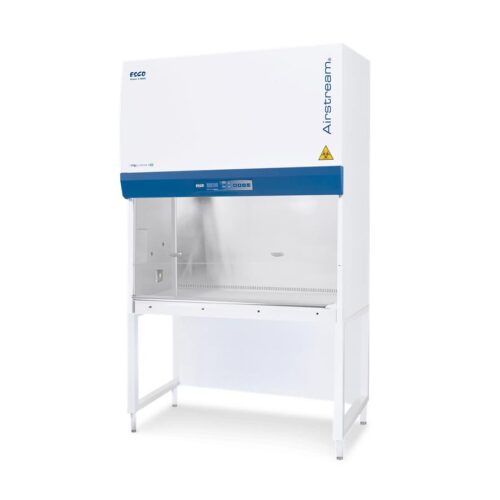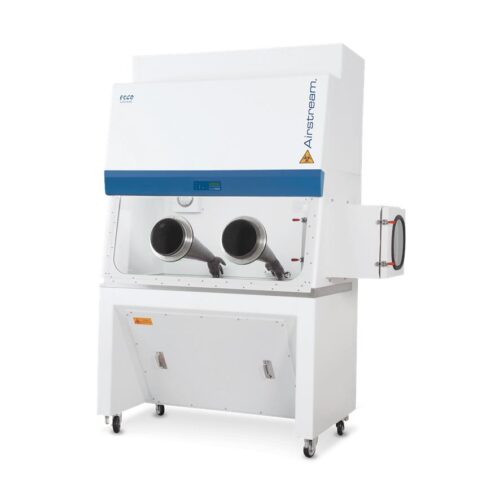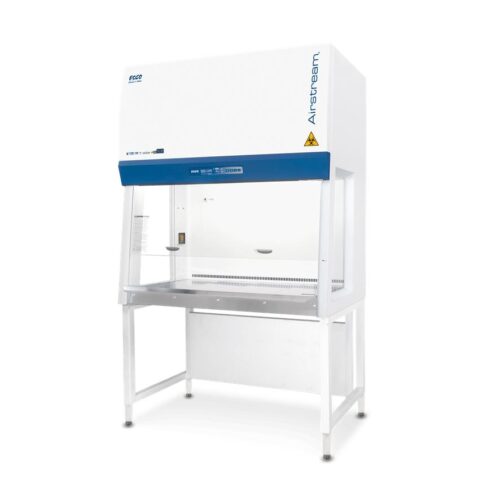Biosafety boxes (BBDs) are mainly used to work with pathogenic biological samples, or to perform protocols that require a sterile working area. BBVs create downstream and incoming airflow that provide product and operator protection. The downward air passes through the ULPA/HEPA filter and creates an ISO Class 3 working area to protect specimens from the risk of cross-contamination. The exhaust air also passes through an ULPA/HEPA filter before release to protect the environment.
To ensure optimal operation of biosafety boxes, they are tested for compliance with EN 12469:2000 and/or NSF 49 standards.
EN 12469:2000 is a new harmonized European standard for microbiological safety cabinets issued by CEN, the European Committee for Standardization. This standard classifies BBB into Class I, Class II and Class III.
The NSF (formerly National Sanitation Foundation) biosafety program was launched in the 1970s at the request of the regulatory community, including the Centers for Disease Control (CDC), the National Institutes of Health (NIH), and the National Cancer Institute. (NCI). This International Standard further classifies Class II biosafety cabinets according to subtypes based on air circulation characteristics: Class II Type A1, Class II Type A2, Class II Type B1 and Class II Type B2.
Class I biosafety boxes protect the operator and the environment from biohazards. This does not prevent exposure to such contaminants that may be present in the room air. Therefore, there is a possibility of cross-contamination, which may affect the results of the experiment. Consequently, the scope of application of class I boxes is limited and they are largely considered obsolete.
Class II biosafety boxes designed to protect both the operator and the environment from dust and aerosols posing a potential biological hazard. In addition, they protect the product from possible contamination and cross-contamination.
Class II BBBs are used in laboratories of levels 1-3
biosafety (BSL1-3). Class II BBs are divided into types A2, B1 and B2.
The class II type A2 biosafety box is the most common class II cabinet. It has a chamber from which 30% of air is pumped out and released into the laboratory through an exhaust filter, and 70% is returned to the working area as a downstream flow. According to NSF/ANSI 49:2010, type A2, unlike type A1, must have a contaminated positive pressure chamber, an intermediate chamber that must be surrounded by negative pressure. In the event of a leak from the elevated pressure chamber, the leaking aerosol will be pulled back to the contaminated chamber by negative pressure and it will not leak out.
Class II type B1 biosafety boxes have a common chamber from which 70% of air is pumped out and 30% is returned to the work area as a downstream flow. This cabinet also has a special exhaust function that eliminates recirculation when work is done at the rear of the case. Toxic chemicals used as an adjunct to microbiological processes are allowed only if they do not interfere with work during recirculation in the downstream flow.
Class II type B2 biosafety boxes are connected to an external range hood and are not equipped with a recirculation system. The use of external forced ventilation allows you to create a more reliable dynamic barrier between the operator and the biologically hazardous material. Theoretically, B2 biosafety cabinets can be considered the safest of all Class II BBVs, so they are used when working with biohazardous agents and volatile chemical compounds. All air flows in B2 boxes passing through filters are brought out and are not reused. However, Class II type B2 biosafety cabinets require large laboratory spaces due to installation features and require complex work with outlet ducts.
Class III biosafety boxes
are suitable for work with microbiological agents classified as biosafety levels 1, 2, 3 and 4. They are often used to work with the most deadly biological pathogens.
Work is performed through the glove ports in the front of the cabinet. During normal operation, the biosafety cabinet is maintained at a negative pressure relative to the environment. This provides an additional safe mechanism in case of violation of physical retention. At all Class III BBVs, the filtrated air supply protects the product and prevents cross-contamination of specimens. The exhaust air is usually filtered through a HEPA filter and removed. Alternatively, you can use double HEPA filtration with two sequential filters.
offers biosafety boxes manufactured by ESCO and is its official distributor in Ukraine. Our staff will gladly advise you on the selection of biosafety boxes and help you make the right choice of the required model.
ESCO biosafety boxes have a wide range of options and accessories. The features of ESCO BBD are ergonomic design and energy saving.








